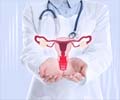Treatment
Scientists have not yet found a definitive cure for IC/PBS.
Symptoms may vary with change in diet and treatment. sometimes they do so without a reason. They can appear, reappear or disappear suddenly and there is no way the doctors can predict the course of the disease or the way it responds to treatment.
Therefore, for now, all treatments are focused at relieving symptoms. Many patients benefit from a combination of treatments that are mentioned below.
a) Bladder Distention
During diagnosis the urinary bladder gets distended and this has been found to bring relief to certain patients. Hence some doctors would use this technique of bladder distention as the first therapy. It is thought that bladder distention interferes with the pain signals being transmitted by the bladder nerves.
Approximately 40 to 50% of patients generally improve with hydrodistension treatment and require no further treatment.
However if on cystoscopy (under anasthesia) the bladder capacity is less than 150 ml, a surgical augmentation of the bladder maybe required.
b) Bladder Instillation
Bladder instillation, is also known as a bladder wash or bath, is a process during which the bladder is filled with a solution that is retained for a period of time, ranging from 10 - 15 minutes, after which it is emptied.
Dimethyl Sulfoxide (Rimso-50), also called DMSO, is the only drug approved by the FDA for such a treatment. A catheter is used to place the drug into the bladder where it is retained for about 15 minutes and then expelled.
DMSO reduces inflammation, prevents muscle contractions and reduces pain. The patient can be trained by a nurse or a doctor to do the procedure at home to make it convenient. There are minimum side effects of the drug. Urinary infection can occur if sterile technique is not used and may require antibiotics. Side effects of the drug itself includes a garlic-like taste / odor on the breath and skin.
Other drugs are not approved by FDA. In India and other countries where RIMSO or DMDO is not available some urologist have made their own cocktail and have had some good results ( unpublished and personal communication). The agents include anaesthetic agent with steroid along with heparin and sodium bicarbonate to facilitate absorption. Like RIMSO, the solution is left in the bladder for 15-20 minutes and a total of 6-8 treatments are given at intervals of 2 weeks. In a treatise on the condition by Dr.Mishra he has described using - 40 ml sensorcaine 0.5%, 20 ml sodabicarb, 2cc dexamethasone and 10000 unit of heparin.
c) Intravesical Botulinum toxin injections (BOTOX)
The toxin causes some degree of neuromodulation. Usually 200 to 300 units of botulinum toxin is injected in the bladder using a cystoscope at 20 to 30 locations (10 units per injection site). The injection may require to be repeated after 6 months.
d) Electrical Nerve Stimulation
Nerves associated with the bladder can be mildly stimulated through electrical pulses. This can be either done through the skin (transcutaneous electrical nerve stimulation --TENS) or with the help of an implanted device.
It is not absolutely clear how TENS works but it has been proposed that the electrical impulses might cause -
- increase blood flow to the bladder
- strengthen pelvic muscles controlling the bladder
- Trigger the release of pain – blocking substances
A person can also have a device implanted, that is capable of delivering impulses to the urinary bladder at regular intervals. The FDA has approved the device, which is being marketed as the Inter-Stim system. It helps to treat symptoms such as –
- urge incontinence,
- urgency-frequency syndrome
- urinary retention
e) Medications
Drugs, that can be used to treat IC includes-
- Pentosan Polysulphate Sodium-100 mg 3 times a day
- Antihistamines
- Antidepressants
- Urinary analgesics
- Pain relievers/narcotics
- Gabapentin
Most drugs have side-effects and they must never be taken without consulting the doctor. In India, FDA approved drugs are not commonly available for treatment. At least 25% of the affected lot are not effectively treated.
f) Diet
There is no scientific evidence associating dietary components to IC/PBS.
But it has been generally observed that certain foods aggravate the condition. They include –
- Alcohol,
- Chocolates
- Caffeine
- Citrus beverages/high acid foods
- Tomatoes,
- Spices,
- Artificial sweeteners
Sometimes, determining the food item that worsens the syndrome is important to dealing with the condition.
g) Smoking
Many sufferers of IC/PBS feel that smoking worsens the condition. It must also be remembered that smoking contributes to bladder cancer.
h) Exercise& Bladder Training
Gentle stretching exercises are known to bring relief to patients suffering from IC/PBS symptoms. Once the pain is controlled, the bladder can be trained to empty at regular intervals or what is called timed voiding with the help of relaxation techniques and distractions.






